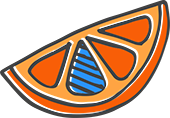Last week I went over why categories are great for you + for your audience. Once you have your category structure in place, adding another level of organization with WordPress tags might be just the thing your blog content needs.
How are WordPress tags different?
A blog post typically has one category + a number of tags. By assigning a tag or tags to a post, you are linking it to posts with the same tag to make it easier for your audience to find similar content.
A food blogger may use the categories breakfast, lunch + dinner, but the tags eggs, gluten, dairy-free, crockpot, etc.
One recipe could be assigned all of those tags, or just one of them. But it likely only belongs to one of the three categories.
Tag overload
A lot of site owners get a tad excited about tags + use a few too many. (Kinda like my love + abuse of hashtags on Instagram.)
But just because you can tag a post with something, doesn’t mean you should.
If you’re tagging an article with words or phrases that appear within the post, you’re going overboard. The search function within WordPress will allow folks to find that exact word or phrase within the content. They don’t need a tag to find it.
If you’re tagging a post with 20-40 tags, it’s time to reassess. The goal with tags is to further classify content for your audience. Even the most loyal subscribers likely aren’t going to filter through dozens of tags for the stuff that interests them.
Get started with tags
Tags, like categories, are very unique to each business + blog. One way that I’ve seen WordPress tags work well is by tagging a post with the type of content.
If you have a collection of tutorials or audio downloads that you provide to your audience, tagging the posts with something like “tutorial” does 3 things:
- Allows your audience to find more content that they want. Hey, I loved this download, I wonder if there are more just like it.
- Enhances your site’s search results by ensuring the posts come up if someone searches for “download” or “tutorial.” You might not actually use the word tutorial in your post. Instead it could be the term how-to or a phrase like “I’ll show you how to.”
- Gives you the ability to add the tag to your menu or sidebar + link directly to all content that fits in the bucket.
The best part about tags is that you can delete them or rename them if you change your mind along the way. So try a few tags out + see how they work for your audience. You’ll know if you see yourdomain.com/tag/tag-name-here as a popular page in your Google Analytics dashboard.
